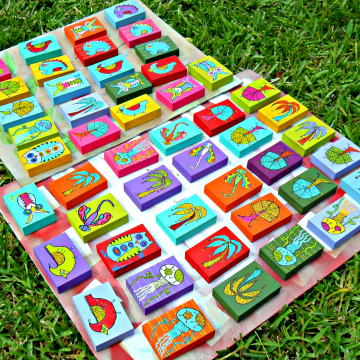

Non-Fungible Tokens, or NFTs, are tokens that are completely unique, and valued as such. To best understand Art Blocks, it’s helpful to know the basics of how NFTs work. At the time of writing, the floor price on the OpenSea marketplace is 6 ETH, and the all-time highest Squiggle sale was Squiggle #3784 for a whopping 750 ETH, or $2.44 million. Today, every piece from the Chromie Squiggle collection now is appreciated for its historic value and role in the early NFT ecosystem. This was around the same time generative art profile picture projects like Bored Ape Yacht Club began catching steam as well, overlapping many of the same collectors of Art Blocks. Its popularity seemed to hit a crescendo in March 2021, and the attention was magnified by Tyler Hobb’s release of the Fidenza collection on Art Blocks. In 2021, Art Blocks blew past $100 million in sales volume, spread around a global base of over 9,000 collectors and traders. Each of the 10,000 pieces in the Squiggle collection was exactly that– a colorful squiggle with varying textures and opacities. This collection married uniqueness with simplicity. Seeking to combine provenance with generative output, Snowfro launched the first collection on Art Blocks called the Chromie Squiggle. He encrypted the NFTs properties within the code. The experience pushed Calderon to explore the creation of an NFT release where the end-user had no foresight into the NFT they would receive.

Calderon leaned on his tech-savvy and smart contract understanding to manipulate the minting process to acquire the CryptoPunks with the rarest attributes (the Zombies). The Archetype NFT project A Short History of Art BlocksĮrick Calderon, or Snowfro, launched Art Blocks in November 2020, citing the inspiration for the project coming from his experience claiming Cryptopunks in 2017. Some Art Blocks projects include interactive artworks, as in the case of Asterisms, while others can be static, as in the case of Archetype. Well-known NFT profile picture projects, like Bored Ape Yacht Club or Crypto Punks, also use the generative art process to randomize the creation of the 10,000 NFTs in their collection. The artwork is minted in real-time on the blockchain as soon as it is purchased, and the output sent is a randomly generated art piece as an ERC-721 NFT, sent directly to the collector’s wallet. In some cases, collectors can pick a style from the options to generate the art.
Art blocks code#
Random factors are introduced into the code to make each art piece unique.Īrtists upload their algorithms to the Art Blocks platform and set the maximum number of editions to be minted. This programmatic, or generative, type of art uses algorithmic processes that make the art creation autonomous. Each output is one of a kind, and buyers typically don’t know how the artwork will exactly look before buying it. Art Blocks is an Ethereum-based NFT creation platform where artists can create and sell on-demand generative art.


 0 kommentar(er)
0 kommentar(er)
